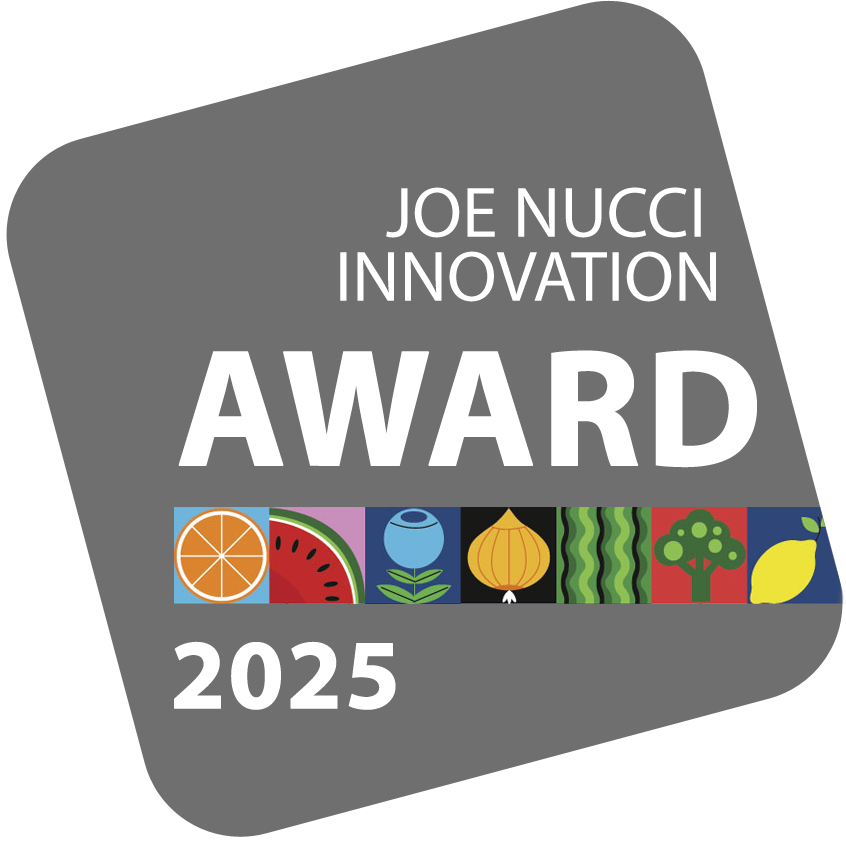Seven Smart Strategies to Sell More Kiwifruit
September 22, 2025 | 7 min to read
Kiwifruit is gaining traction among U.S. consumers, with dollar sales soaring 35% year-over-year and a 23% increase in consumption from 2022 to 2024. Driven by health trends and convenience, the yellow variety, particularly Zespri’s SunGold, is fueling growth, while consumers increasingly seek organic options. Retail strategies such as attractive displays and effective cross-merchandising are boosting impulse buys, leading to significant sales increases. California dominates U.S. production, yet imports remain vital to meet demand year-round.
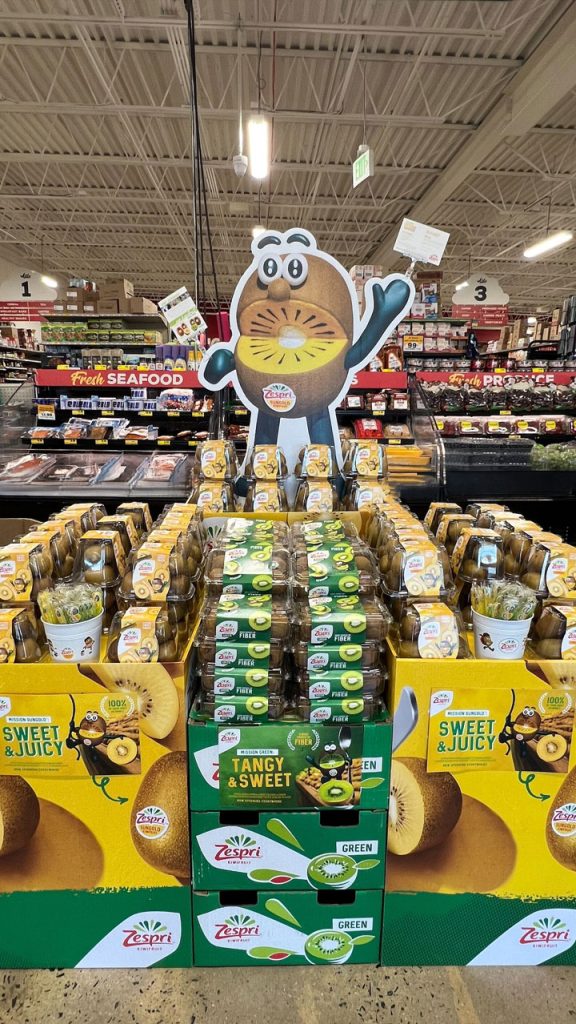
The fruit finds its sweet spot with consumers as sales climb.
Kiwifruit is taking flight with U.S. consumers. Three data points paint this positive picture. First, while this fuzzy fruit represents less than 1% of total produce sales for the 52 weeks ending July 13, 2025, according to data shared by Chicago, IL-headquartered NielsenIQ, kiwi dollar sales are up 35% compared to the prior year.
Second, when looking at the total fruit bowl, kiwi is the fastest-growing fruit (minimum $10MM total sales) across the department, increasing by over +24 points, based on Circana Total US MULO+ for the year ending July 13, 2025, as shared by Zespri North America, in Newport Beach, CA.
Third, and looked at a different way, kiwifruit consumption in the U.S. rose 23% from 2022 to 2024, with annual per capita consumption reaching 1.7 pounds in 2024, according to the Aug. 6, 2025-released report, Kiwifruit Market Size, Share, Growth, and Industry Analysis, by Industry Research, with U.S. headquarters in Burlingame, CA.
“Kiwifruit sells well,” says Jason Kazmirski, retail specialist for Charlie’s Produce in Seattle, WA, which supplies several independent retailers in the Pacific Northwest, such as Metropolitan Market and larger chains, such as Fred Meyer and Sprouts. “The gold kiwi in 1-pound clamshells has especially taken off.”
“Consumer demand is largely driven by health trends such as immune and digestive support, premiumization and snacking convenience,” explains Ken Kragie, in sales at Western Fresh Marketing, in Fresno, CA.
“In our experience, kiwi shoppers include families looking for versatile fruits for snacks or recipes, and wellness-focused individuals attracted to kiwifruit’s high vitamin C content. Other demographics include health-conscious Millennials and Gen Z consumers who seek nutrient-dense, convenient snacks with immune-boosting and digestive benefits.”
1. PLAN FOR YEAR-ROUND SUPPLY
California grows much of the U.S. kiwifruit crop, accounting for 94% of domestic production, based on data in the Industry Research report. The season spans from October through May, with December and January as the peak of harvest, according to the California Kiwifruit Commission, in Sacramento, CA.
“Gaps in California-grown golds and reds arise due to limited acreage,” says Kragie. “However, we are collaborating with growers on expanding plantings and trialing proprietary cultivars, which are expected to strengthen supply and competitiveness within the next few years.”
Imports make up 77% of the total U.S. kiwifruit supply, per the Industry Research report.
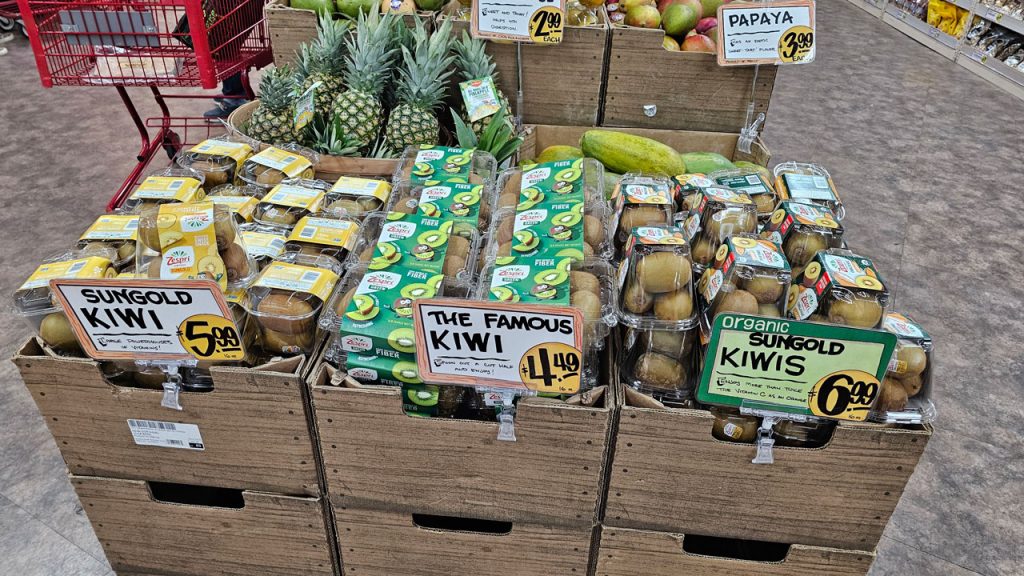
Oppy Produce, headquartered in Coquitlam, British Columbia, sources kiwi from New Zealand, Chile, Italy, Greece, Argentina and California, according to Eric Ziegenfuss, category manager of tropicals. “The seasons align well to offer year-round green and just an eight-week gap for gold that occurs in March and April. We’re actively working on filling those gaps by identifying the right supply regions.”
2. CARRY ALL COLORS
Green kiwifruit is the top seller at Robért Fresh Market and Lakeview Grocery, a six-store chain based in New Orleans, LA. “Yellow isn’t always available here, but when they are, it sells well,” says Terry Esteve, produce and floral director.
Green kiwi, the conventionally-grown Hayward variety, remains the top-selling SKU by volume, says Kragie. “Green sells on affordability and tangy flavor. It drives the bulk of the volume. Gold varieties are growing at 7-10% annually in U.S. markets, and growth is due to the sweet, smooth taste that appeals to younger buyers.”
Zespri’s SunGold kiwifruit fueled a staggering 49% of total kiwi category growth in the past year, according to Bianca Fiedler, trade marketing director for North America, for Zespri North America. “And the best part is, there’s still massive untapped profit potential in the category.”
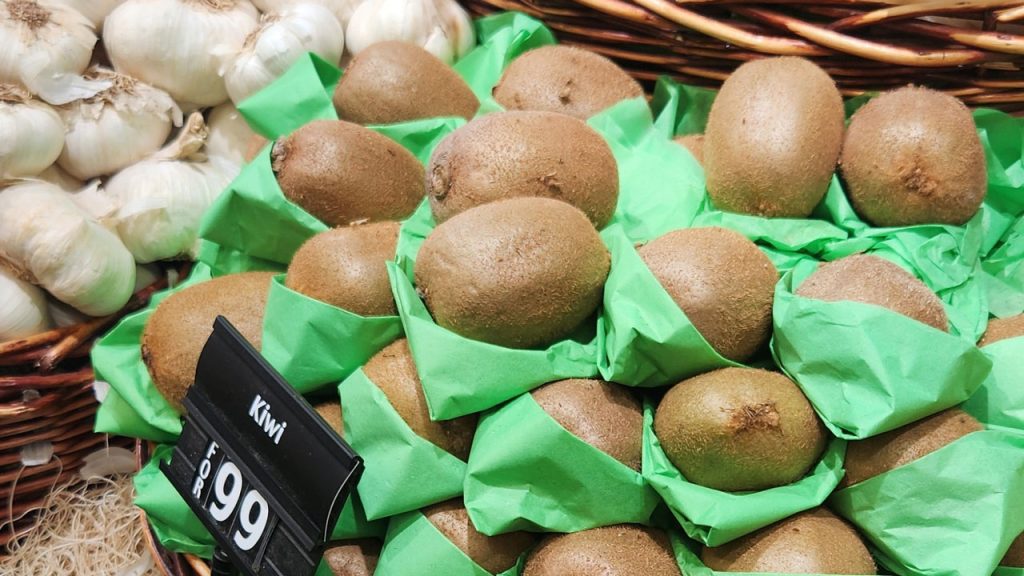
Red-gold fleshed kiwi are a niche, but, like the yellow, are fast-growing premium options. Red kiwi has a vibrant color, berry-like flavor, and super-sweet taste.
“Red-gold kiwi volumes are doubling in some seasons, although from a smaller base,” says Kragie. “We offer limited volumes of red kiwi fruit during California’s peak, packed in 1-pound clamshells.”
He encourages retailers to highlight the differences between varieties, i.e., “sweet gold” versus “tangy green,” with signage and educational content to drive trial and sales.
3. MIX IN ORGANIC
Conventionally grown kiwifruit accounts for most sales at retail. As of the 52 weeks ending July 13, 2025, 18% of kiwi dollar sales were for kiwi that were stated organic on their packaging, according to NielsenIQ data.
“As more retailers add organic to their assortment, both organic SunGold and Zespri Green have seen triple-digit volume growth rates this season,” says Zespri’s Fiedler.
Organic kiwifruit supply is steadily increasing and aligning well with rising demand, according to Fernando Caudillo, vice president of tropicals for Oppy Produce. “Similarly to conventional, there is no gap for green organic kiwi, and an 8- to 10-week gap for gold, but we’re working to close that.”
4. MOVE PLENTY WITH PACKAGING
Mighties brand green kiwifruit, grown and marketed by Pasadena, CA-headquartered Sun Pacific, was one of the first brands to pack kiwis in clamshells.
“We recognized the kiwi category was struggling to gain traction due to being sold by the piece, and unfortunately, because of their brown, unappetizing appearance,” says Sarah Deaton, Sun Pacific’s director of marketing. “With packaging, we were able to show the beautiful inside of the fruit through fruit-forward imagery and provide communication around taste and health benefits. Packaging kiwi really helped propel the category by communicating more value to the shopper.”
Packaged kiwifruit is growing fast, especially in clamshells.
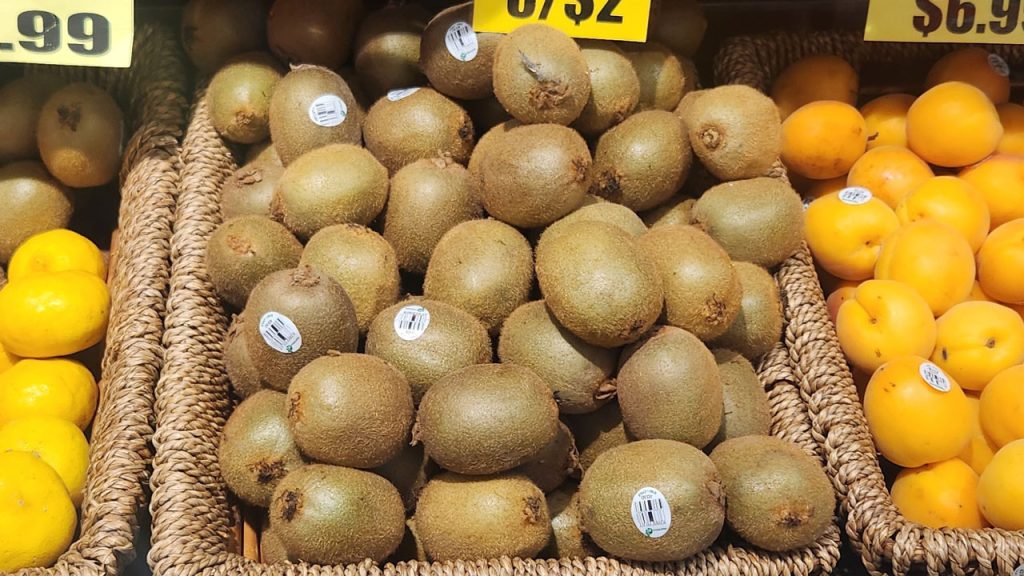
“The 2-pound clamshell is the top-selling format, but 3-pound and 1-pound packs are also show strong momentum,” says Oppy’s Ziegenfuss. “This is good for growth, as consumers are buying more in a single trip. Packaged kiwifruit is now outselling bulk, and it’s still growing. Convenience and quality perception are driving that.”
This year, Zespri is transitioning to fully home-compostable labels on its kiwifruit.
5. BUILD IMPULSE-GRAPPING DISPLAYS
Half of kiwi shoppers decide to buy the fruit on impulse. “These shoppers need to be convinced in-store,” says Zespri’s Fiedler. “Secondary displays in impulse-grabbing locations, such as the front of category and front of store, are most impactful.”
Shoppers are also actively searching for kiwi, Fiedler adds, and recommends “go big and bold with attention-grabbing displays.”
“The impact is undeniable. A recent third-party study revealed that simply doubling a kiwifruit display led to a jaw-dropping 96% increase in dollar sales. More space means more sales, so stack it high, make it shine, and watch the product fly off the shelves.”
Create a kiwi destination, recommends Ziegenfuss. “Display green, gold and red together.”
Sun Pacific’s Deaton says retailers who pair eye-catching kiwi displays with putting the fruit on promotion “will see greater sales.”
6. GET CREATIVE WITH CROSS-MERCHANDISING
Moving gold kiwi from the exotic section to adjacent to berries may result in a 64% total fresh fruit sales uplift, driven by higher and overall incremental basket spend, according to Kantar, Everyday Shelf Market Research 2022, as shared by Zespri.
“Global research shows that secondary displays in the yogurt aisle generate the highest level of stimulus recall, and in-shelf primary display visibility increases stopping power and purchase penetration,” says Fiedler.
Merchandise kiwi targeted toward eating occasions throughout the day, adds Sun Pacific’s Deaton. “For example, a smoothie section featuring kale, spinach, kiwi, navels, apples, and yogurt makes it easier and convenient for shoppers to get what they need all in one place.”
7. PROMOTE
Promotions are best tied to growing seasons. For example, Oppy focuses on early-season promotions for New Zealand fruit “to re-engage and educate consumers when the season starts,” says Ziegenfuss.
The early season for New Zealand kiwifruit typically begins in late February or early March. The red variety is often the first to be harvested. The primary harvest season, including gold and green varieties, generally peaks from mid-April through June.
Peak promotional times for fruit from Chile is March to October, and for California, from October to January, says Western Fresh Marketing’s Kragie. “These windows are ideal for front-of-store promotions and seasonal displays.”
Well-executed promotions are essential to building awareness, says Oppy’s Caudillo, “and growing the entire category.”
12 of 23 article in Produce Business September 2025

